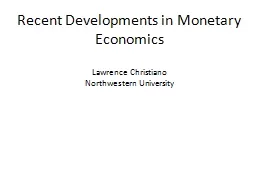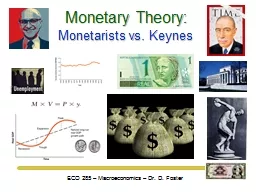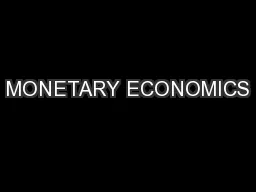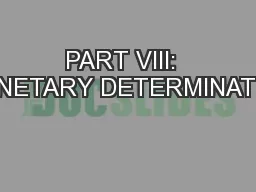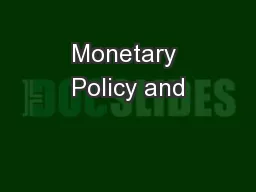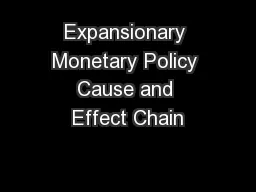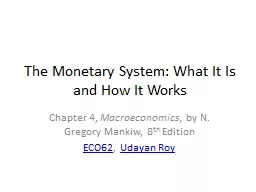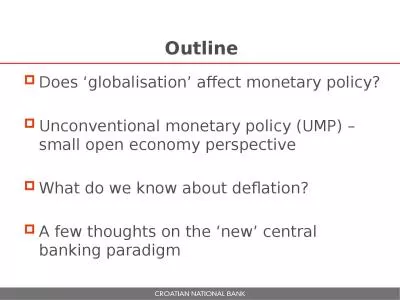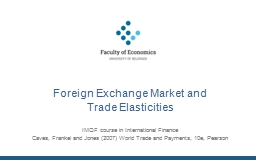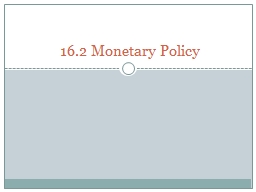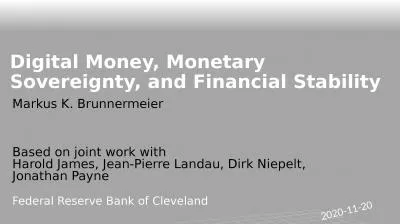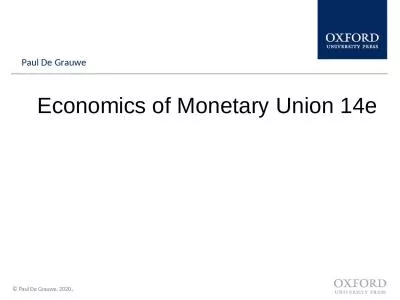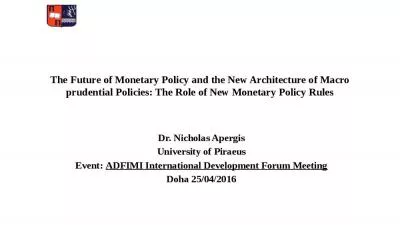PPT-Recent Developments in Monetary Economics
Author : lindy-dunigan | Published Date : 2017-06-20
Lawrence Christiano Northwestern University Overview A new consensus has emerged about the rough outlines of a model for the analysis of monetary policy Consensus
Presentation Embed Code
Download Presentation
Download Presentation The PPT/PDF document "Recent Developments in Monetary Economic..." is the property of its rightful owner. Permission is granted to download and print the materials on this website for personal, non-commercial use only, and to display it on your personal computer provided you do not modify the materials and that you retain all copyright notices contained in the materials. By downloading content from our website, you accept the terms of this agreement.
Recent Developments in Monetary Economics: Transcript
Lawrence Christiano Northwestern University Overview A new consensus has emerged about the rough outlines of a model for the analysis of monetary policy Consensus influenced heavily by estimated impulse response functions from Structural Vector . Steven Barnett. (May 2010). Summary and Outline. Inflation poses a major risk. Too high and rising. Broad-based . Not just meat prices. Also excess demand. Monetary tightening must continue. Control inflation expectations. ECO 285 – Macroeconomics – Dr. D. Foster. Monetarists vs. Keynes. Friedman and the Monetarist View. We can imagine a “market” for money…. --money demand depends on income (mostly) and on interest rates (slightly). EFFECTIVENESS OF MONETARY POLICY AND RATIONAL EXPECTATION. Content. Relative effectiveness of Monetary Policy – the IS-LM again…. Intermediate Targeting. Keynesian versus Monetarist. Rational Expectations. OF EXCHANGE RATES. LECTURE 23 --. . . Building blocs. - Interest rate parity. - Money demand equation. - Goods markets. . Flexible-price . version: . monetarist/Lucas model. - . derivation. - applications: hyperinflation; speculative . The Federal Reserve. Susan Kizer. Economic Education Coordinator. The opinions expressed are solely those of the presenters and do not reflect the opinions of the Federal Reserve System. . . Monetary Policy. This web quiz may appear as two pages on tablets and laptops.. I recommend that you view it as one page by clicking on the open book icon at the bottom of the page.. 16b – Other Monetary Policy Issues. Problem. : Recession. . Tools of Expansionary Monetary Policy and usage. :. Reserve . Requirement . – . decrease. . (creates more . excess reserves . that may be loaned out & increases . The Monetary System: What It Is and How It Works Chapter 4, Macroeconomics , by N. Gregory Mankiw , 8 th Edition ECO62 , Udayan Roy Three Main Questions What is money? What is the role of a nation’s banking system in determining the quantity of money in the economy? Unconventional monetary policy (UMP) – small open economy perspective. What do we know about deflation?. A few thoughts on the ‘new’ central banking paradigm. How much does increasing globalisation . in International . Finance. Preview. Goals of macroeconomic policies. Gold standard. Interwar years. Bretton Woods system. Collapse of the Bretton Woods system. Macroeconomic Goals. Macroeconomic. . Main Ideas. Under a fractional reserve system, banks are required to keep a portion of their total deposits in the form of legal reserves.. Banking with fractional reserves results in a monetary expansion process that increases the total money supply available to the public.. Markus K. Brunnermeier. Based on joint work with . Harold James, Jean-Pierre Landau, Dirk Niepelt, Jonathan Payne. Federal Reserve Bank of Cleveland. . 2020-11-20. Rethinking Money in the Digital Age. Paul De Grauwe. The . fragility of incomplete monetary unions. Introduction. Summing up from previous lectures:. Complete monetary union. : a monetary union together with budgetary union.. Incomplete monetary union. Macro prudential . Policies: The Role of New Monetary Policy Rules. Dr. Nicholas . Apergis. University of Piraeus. Event: . ADFIMI International Development Forum Meeting. Doha 25/04/2016. Roadmap. ► The new banking environment: idiosyncratic...
Download Document
Here is the link to download the presentation.
"Recent Developments in Monetary Economics"The content belongs to its owner. You may download and print it for personal use, without modification, and keep all copyright notices. By downloading, you agree to these terms.
Related Documents

